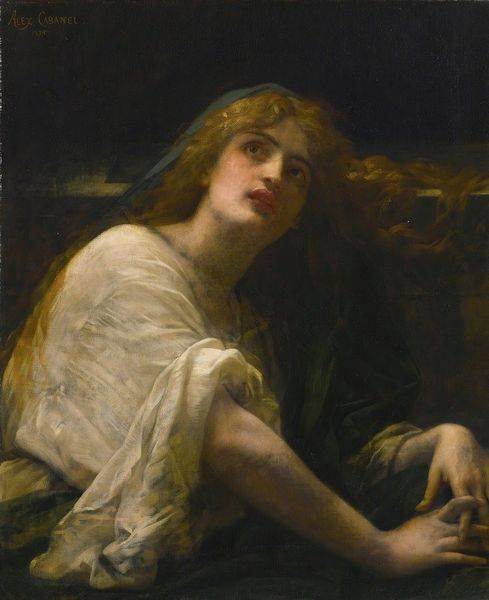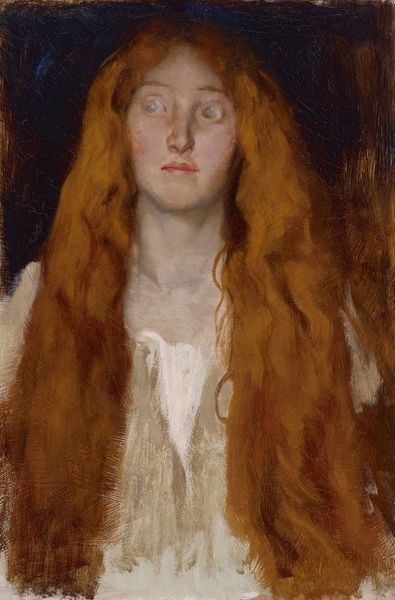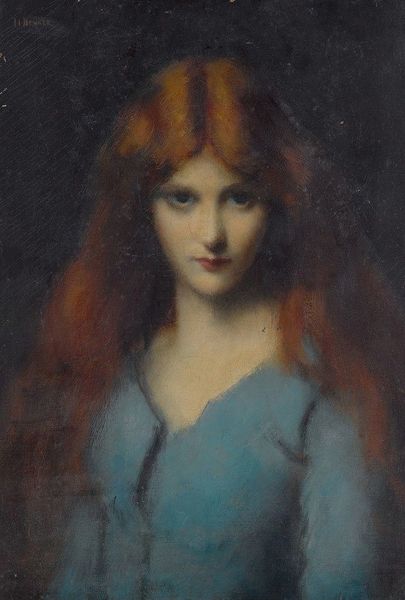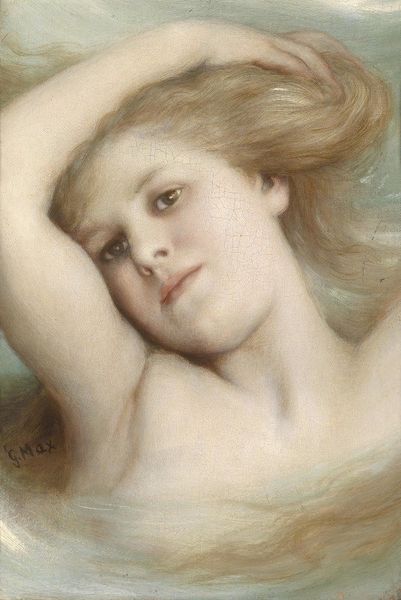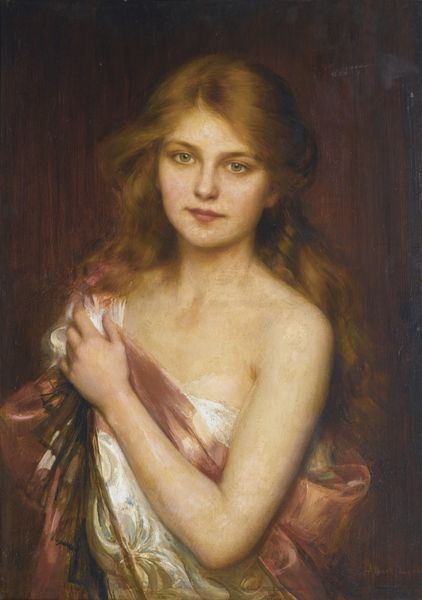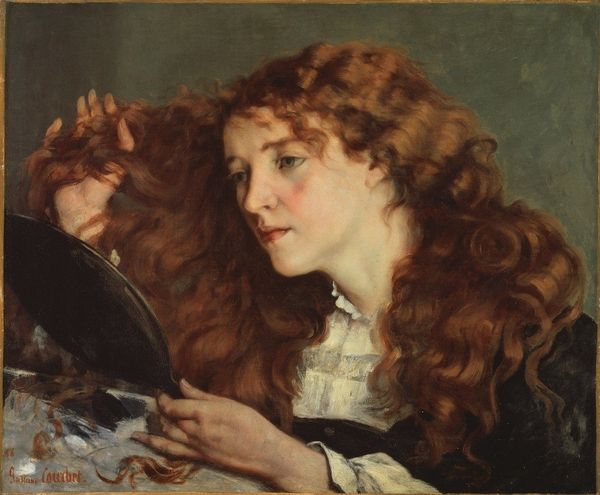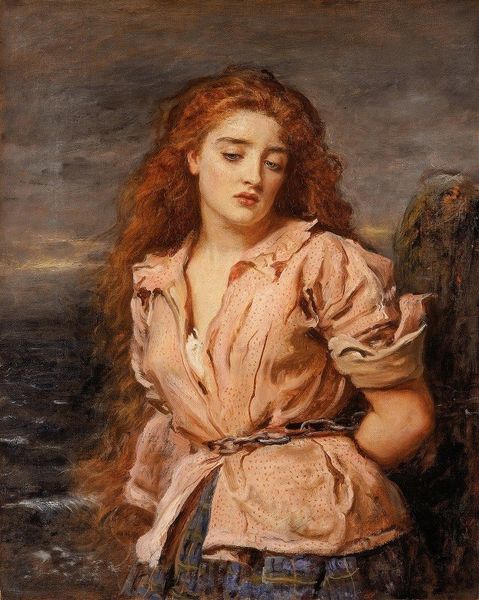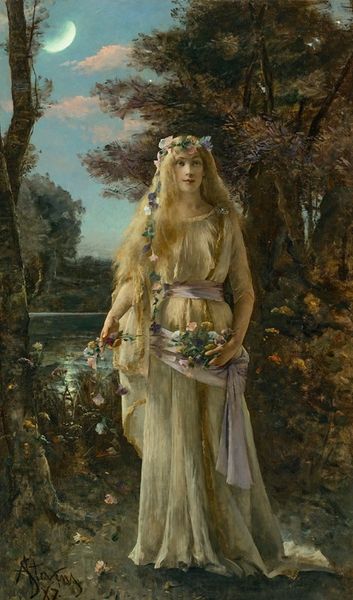
Copyright: Public Domain: Artvee
Alfred Stevens painted this *Maria Magdalena* during an era of significant religious and social change. Mary Magdalene, often depicted as a repentant sinner, became a figure through which artists like Stevens could explore themes of guilt, redemption, and the complex role of women in society. Made in the late 19th century, the painting reflects the period's fascination with religious subjects, and the growing artistic interest in psychological depth. The inclusion of the skull, a vanitas symbol, suggests a meditation on mortality, perhaps reflecting a broader societal contemplation of life's transience. In a time when the institutions of art were becoming increasingly secular, Stevens, like many of his contemporaries, sought to imbue traditional religious subjects with a modern, emotional sensibility. The role of the historian here is to examine not only the painting's aesthetic qualities, but its place within the cultural and institutional landscape of its time. Resources like period journals, exhibition catalogs, and biographical studies of the artist can provide insight into the painting's original context and meaning.
Comments
No comments
Be the first to comment and join the conversation on the ultimate creative platform.
